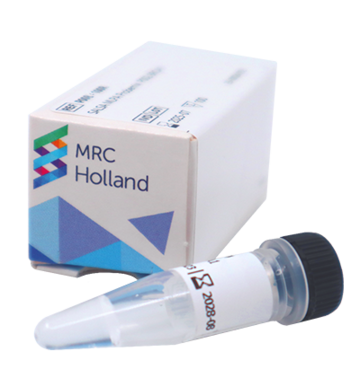The SALSA MLPA Probemix P292 PCDH15 is a research use only (RUO) assay for the detection of deletions or duplications in the PCDH15 gene, which is associated with Usher syndrome.
Usher syndrome is a heterogeneous autosomal recessive disorder characterised by hearing loss and retinitis pigmentosa. Three clinical types (USH1, -2, and -3) are defined with respect to the degree and progression of hearing loss and the presence or absence of vestibular dysfunction. Usher syndrome type I (USH1) is the most disabling form, while USH2 is the most common of the three types of Usher syndrome. The following six genes have been identified for USH1: MYO7A (Myosin VIIA, USH1B), USH1C (Usher syndrome 1C), CDH23 (Cadherin related 23, USH1D), PCDH15 (Protocadherin related 15, USH1F), USH1G (Usher syndrome 1G) and CIB2 (Calcium and integrin binding family member 2, USH1J). Mutations in the PCDH15 gene are associated with Usher syndrome type 1F (USH1F). The gene has been shown to be particularly prone to large rearrangements (Roux et al. 2011).
The PCDH15 gene (33 exons) spans ~1 Mb of genomic DNA and is located on 10q21.1, ~55 Mb from the p-telomere. The gene is a member of the cadherin superfamily and encodes for an integral membrane protein that mediates calcium-dependent cell-cell adhesion.
More information is available at https://www.ncbi.nlm.nih.gov/books/NBK1265/.





